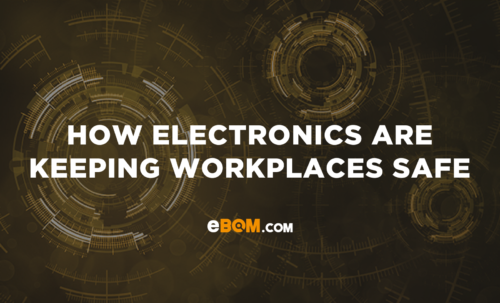As of April 14, 2021, approximately 11.5 million jobs, from 1.3 million different employers were furloughed in the United Kingdom as part of the government’s job retention scheme, according to Statistica. It is estimated the UK government spent 46.4 billion British pounds on the scheme, which is expected to rise to over 80 billion by the time the scheme stops. As you can imagine, with the scheme stopping at the end of October, many employees are going back to work. With COVID19 still circulating the globe and vaccinations being pumped out, it is important that workplace environments are as safe as possible. Within this article I will discuss how electronics are keeping workplaces safe from the virus along with monitoring the place of work.
Within the last few years, wearable devices have been a hit. With over 67.7 million wrist wearable shipments in 2020, and the number of connected wearable devices to grow to over 1.1 billion in 2022 (according to Statista), the future of wearable electronics is endless. Wearable devices are a great way to monitor employee’s health and construct healthcare plans. For example, some employees offer perks to a job, such as free healthcare schemes which could be a bonus to the employees. Wearable devices are a great way to monitor someone’s daily movement pattern, blood pressure, exercise regimes and productivity.
Drones are capable of highly advanced surveillance; thanks to the fact they can reach astonishing heights and travel at high speeds. Drones are already used by law enforcement and can carry various types of equipment such as heat sensors, infrared cameras, and even bulky cargo. Drones and cameras situated around the workplace are great to inspect potentially hazardous areas. The benefits of drones / cameras in the workplace are they do not need to take breaks or a wage like humans do.
Virtual Reality Training Software
Workplace injuries can be very common with improper use of machinery or equipment. Oftentimes, this happens because employees have not been given sufficient training to safely use the equipment, or because training courses are not as comprehensive as they should be. Thanks to virtual reality, which has become a very popular training tool, employees can now immerse themselves in a simulated environment that is identical to the one they are working in, to learn how to properly use certain equipment. This way, they can be put in potentially hazardous situations, without actually being exposed to risks.
Health and Safety Management Software
H&S management software in the workplace is a great way to share important information and increase employee engagement across the workplace. Not only this, but risk analysing plans to record workplace-related accidents are a great way to prevent potentially hazardous situations. Most H&S management software’s are app based and are easy to report hazardous observations, regardless of the location.
The Internet of things is known as the network of physical objects that are embedded with software, sensors, and other technologies for the purpose of connecting data with other devices inside the internet. IoT in the workplace is a great way to connect the workforce. Not only this, IoT has many financial benefits such as monitoring equipment malfunctions, potentially saving thousands of pounds, along with keeping the workplace safe. For example, if an industrial machine had a malfunction whereby it was considered dangerous for the employees to use, the IoT software would alert staff, potentially saving an injury. IoT technology keeps the workplace safe by predictive maintenance. The main idea is the software will detect any structural failures in the connected devices, making corrective measures.
There is probably no technology that revolutionized workplace safety more than robotics. Robotic technology can help reduce tedious tasks and improve employee efficiency. Repetitive and dull tasks such as packaging or labelling products can result in stressful work environments, reducing attention span, and promoting accidents or mistakes. The manufacturing industry is probably the one benefiting most from robotics assistance, as collaborative robots can now work alongside humans. And because of new technologies, robots are equipped with sensors to detect human workers and cease operations if someone is too close to them and could get hurt.
By Amy Leary, Marketing Manager at eBOM.com










